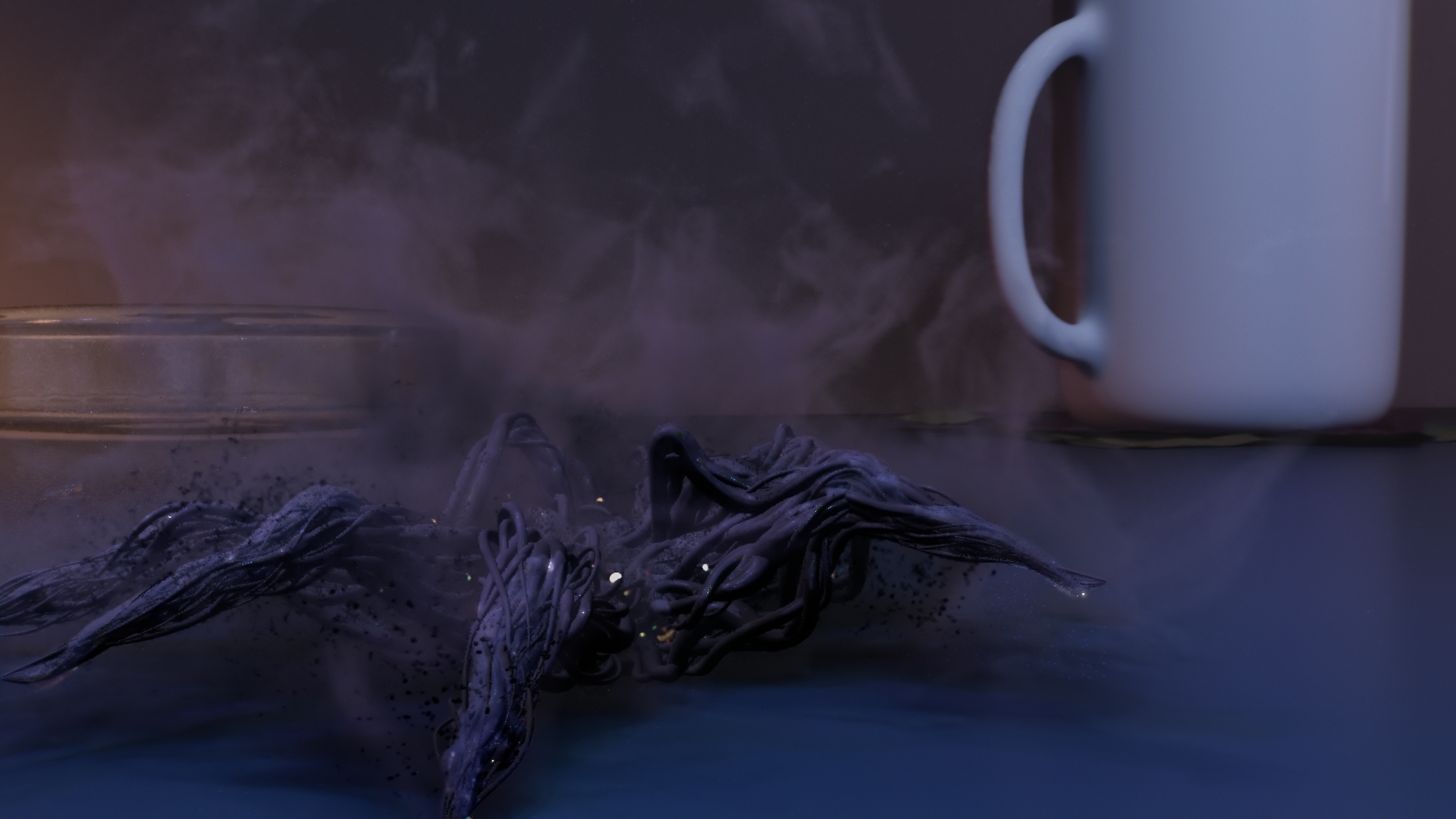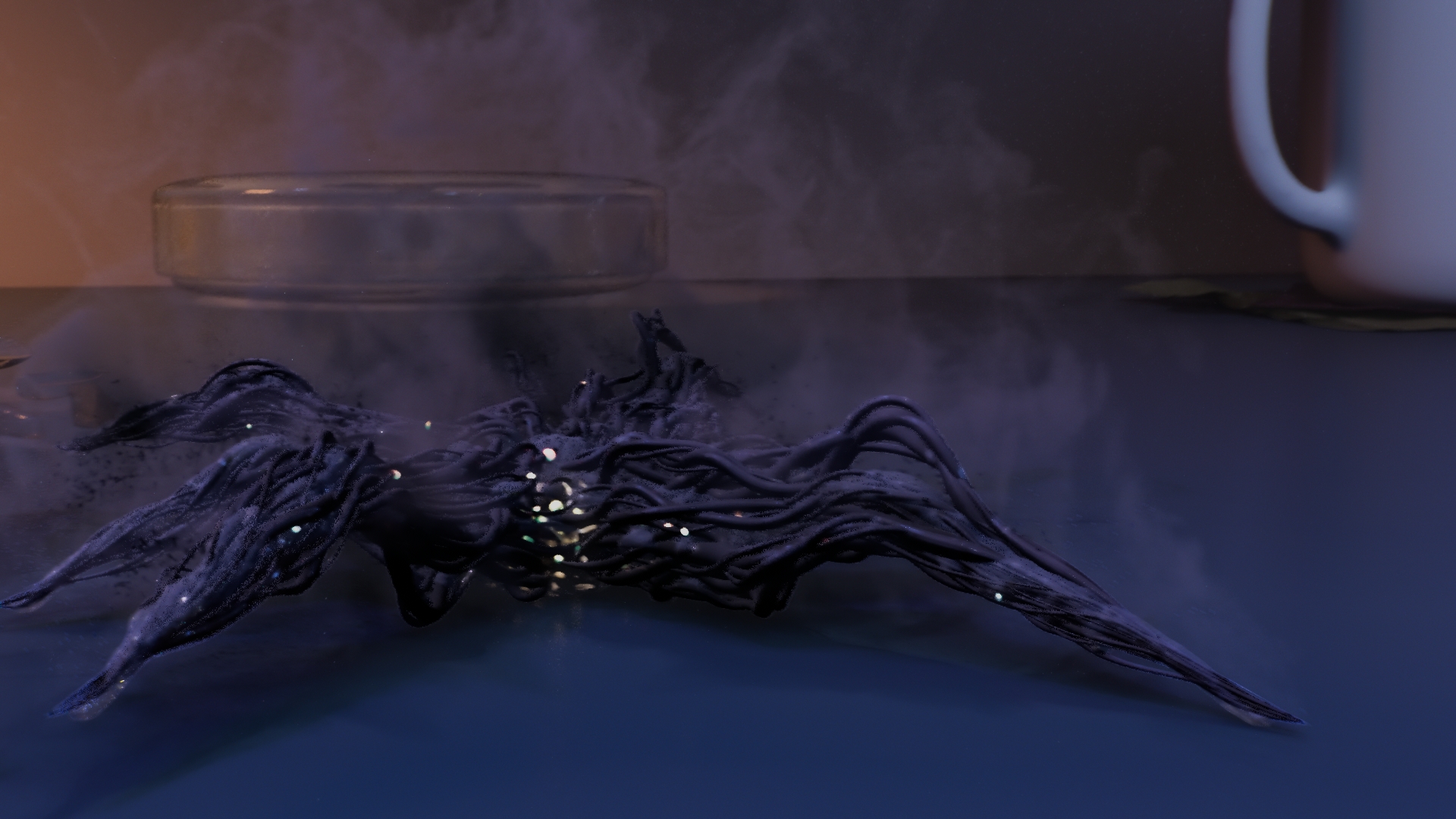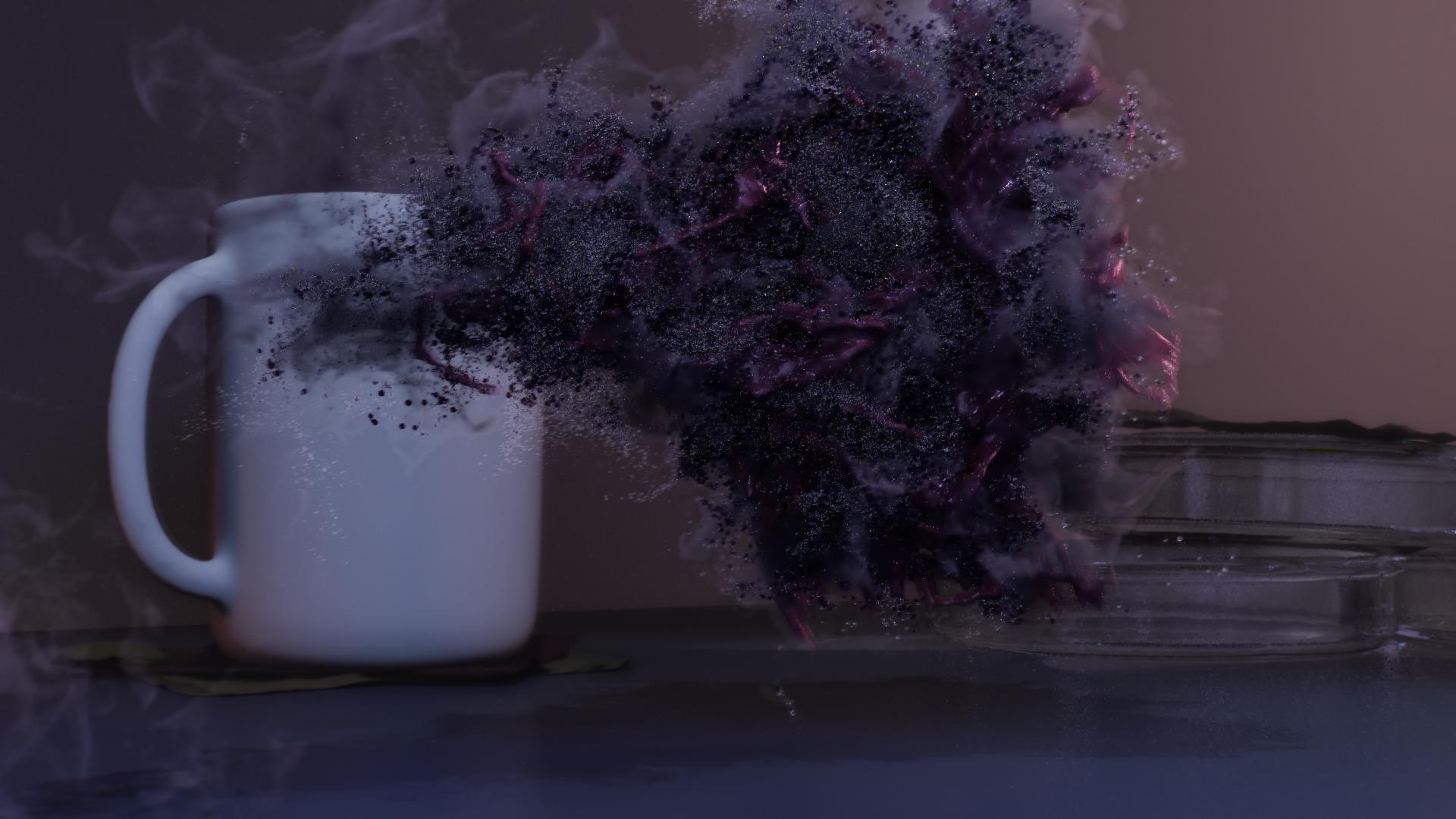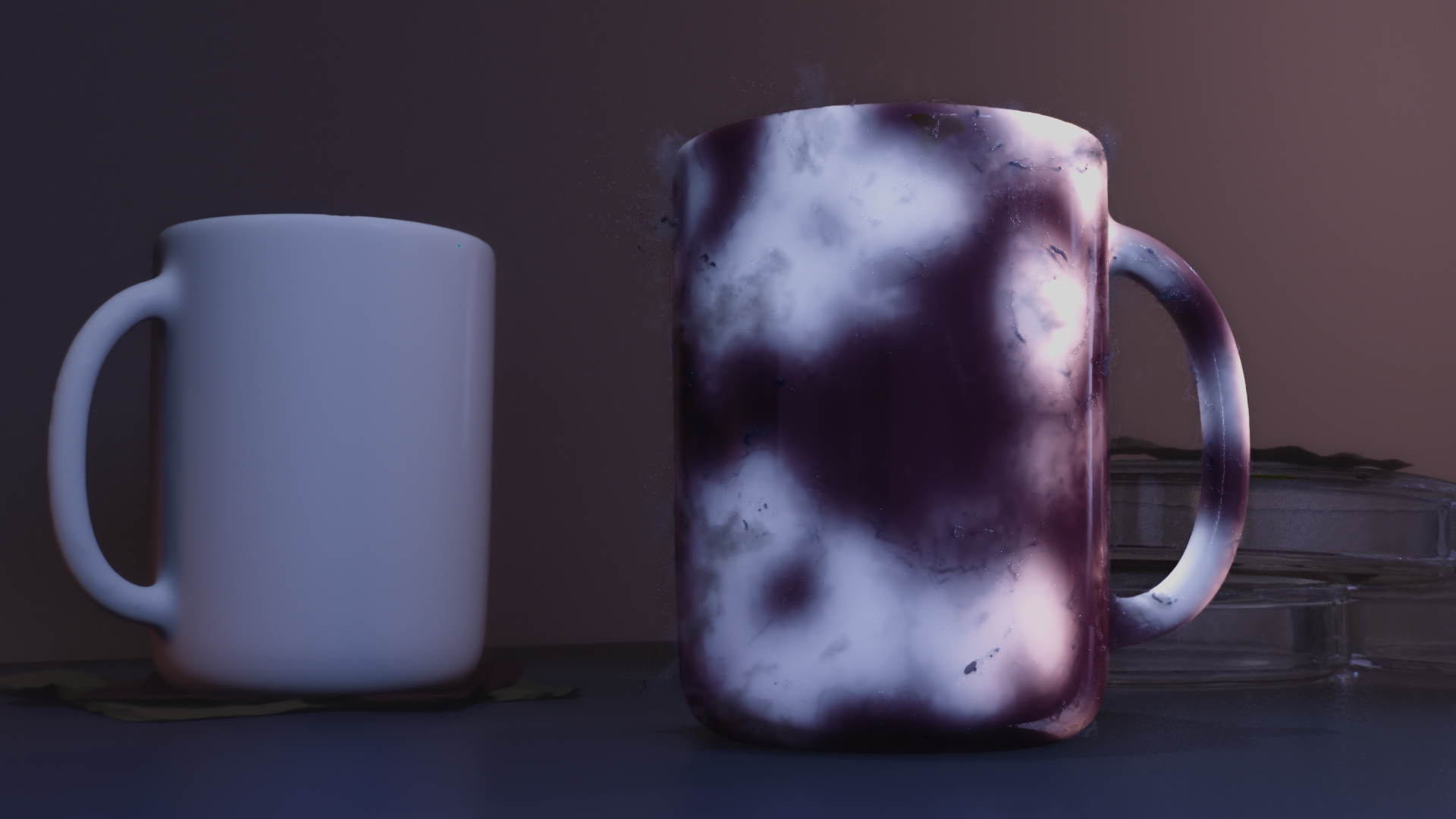exeMorph
This project is inspired by an idea from Prey(2017) game.
In the game the idea is that this alien ceature mimics an existing object. There are multiple scientific theories for the transformation in the game but the actual one is not known, so I had a lot of freedom exploring different ideas and techniques to achieve this effect.
Transformation
For the transformation I decided for more of an organic approach using flip fluids, smoke, and particle systems. This allowed me to learn how to make a complex effect with multiple layers, how to apply different forces and how to fully control and manipulate volumes for the effect to be as flexible as possible.
exeMorph
My alien creature is fully procedural, can have however many legs and walks on any surface, over objects or up the stairs. Each leg is a point connected to the center point defining the "skeleton" for exeMorph which works as a base for most of the effects. It moves with the help of a little bit of scripting.
Tendril system
Each leg is a line formed from tendrils - multiple lines wrapped around each other. Each primitive has randomised base width fitted in a specific range, can stretch accordingly and oscillate in position in certain parts (arbitrary) to mimic simulated wire behaviour. Randomised impulse affecting width travels through each tendril for extra detail.
Additional elements combined to create exeMorph: particles, smoke, vdbs, tendrils, energy core spheres.

Final Transition
Effect based on cost masking, separated edges of the mask were to resemble tendrils/veins to make connection with the creature and to add organic look.
Project was completed using Houdini, shading and rendering was done with mantra. Compositing was done in Nuke, using cryptomatte and appropriate AOVs.
Special thanks to Charles Trippe and Vlad Tushevskiy, amazing instructors who showed me the right way and helped explore deep technical parts of Houdini while making this project.
Stress testing
I spent some some time exploring exeMorph's behaviour.
The walking is dependant on the velocity in which it is moving, how elevated it is and on its "stepping" pointcloud.
Some art directed features/attributes per leg were created to debug specific events, however neither of them are used in this stress testing video.
Different point clouds would result in various types of walk giving exeMorph some personality.
Not all point clouds were entirely suitable but that was part of the research.
If you are interested, here is a list of the ones I tested, listed from best response to worst:
- Combined even pointcloud with arbitrarily sprayed points
- Even scatter
- Even Grid
- Uneven scatter
- Hexagon point cloud
- Circles on a grid



